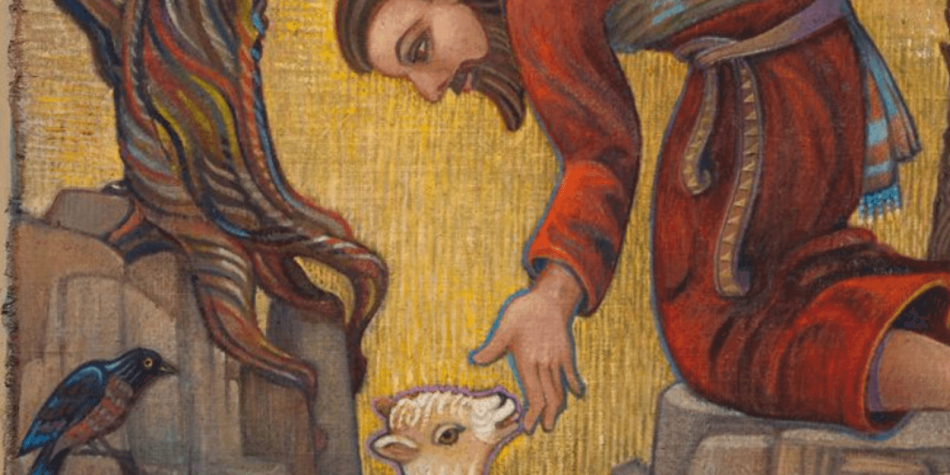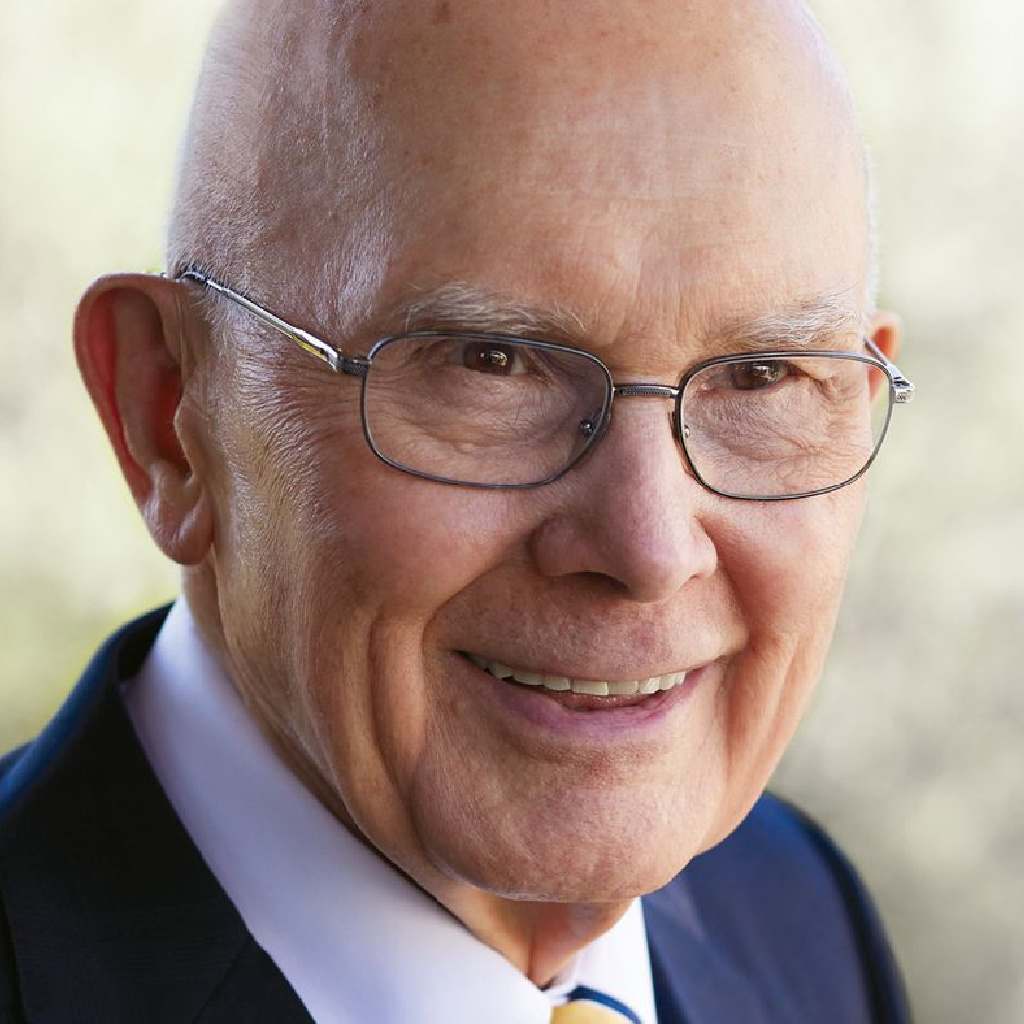Of course, holiness is fairly easy if you don’t care about unity; you just split over every disagreement. Similarly, unity is fairly easy if you don’t care about holiness; anything goes, and we shrug our shoulders and ignore it. … The world will take no notice of a divided church. The world will take no notice of an unholy church. –NT Wright
In August 2018, BYU professor Eric Huntsman delivered an extraordinary, impassioned devotional address to the BYU community, making the case for a spirit of inclusion in Latter-day Saint ministry. Entitled “Hard Sayings and Safe Spaces,” Huntsman’s address provided examples of bold Christian outreach and engagement among Latter-day Saints, including the Tabernacle Choir’s joint rehearsal with the San Francisco Gay Men’s Chorus while on tour in California earlier that year.
In his address, Huntsman ably confronted a challenge that confronts every community that is oriented around beliefs: the tensions that come from a community’s devotion to its belief system and its desire to expand and retain its membership.
Attentive Latter-day Saints have experienced that tension in recent years in clarifications to core teachings, in the professionalization of church history, in outreach to the LGBT+ community, in reiterations of the Church’s traditional views on gender and sexuality, and in statements on immigration and refugees. Each of these efforts has proven divisive to various ideological segments of our community. Christianity is not a faith with a primarily defensive posture focused on threat mitigation.
Eric Huntsman’s address is a welcome corrective to the tendency among our and other communities to define ourselves in opposition to “the world” and to obsess over the lines that delineate between our beliefs and those of others around us. In Richard Rohr’s wonderful book Things Hidden, he touches on this tendency:
If we do not understand election as “inclusive election” (chosenness is for the sake of communicating the same to others), religion almost always becomes an exclusionary system against the “non-elect,” “un-worthy” or “impure.” Does this need much proof? It becomes “my belonging system” instead of any good news for the world, which is exactly what Jesus did not do. In any kind of “exclusive election,” the “chosen” do not see their experience as a gift for others, but merely a gift for themselves. We end up with a very smug and self-satisfied religion (Rohr, Richard. Things Hidden: Scripture as Spirituality, p. 44).
The late Rachel Held Evans similarly said of Protestant Christianity:
…there are always folks who fancy themselves bouncers to the heavenly banquet, charged with keeping the wrong people away from the table and out of the church. Evangelicalism, in particular, has seen a resurgence in border patrol Christianity in recent years… (Evans, Rachel Held. Searching for Sunday, p. 149).
The principle uniting these commentators is true and important: Christianity is not a faith with a primarily defensive posture focused on threat mitigation. While it is an essential function of Christian communities to maintain boundaries of belief and practice, it is also true that boundaries can become an idol from which we seek protection and a sense of identity. The idolizing of such lines has a unique ability to turn communities insular, weak, inward-focused, and incapable of influencing the world in any meaningful way. By contrast, in Matthew 16:18, we are given an image of the gates of Hell as a defensive structure, while the church is on offense, outward-focused, and indomitable in the face of resistance.
Reaching out to gather souls into the fold is a critically important aspect of the Latter-day Saint worldview, expressed in the scriptural language of leaving 99 sheep for the one that is lost, and the parable of the prodigal son. It is captured in hymns like “Dear to the Heart of the Shepherd” and in President Gordon B. Hinckley’s general conference talk “Our Mission of Saving,” where he references Brigham Young’s entreaty to Utah saints to leave their newfound home and go back to gather others along the trek West:
“That is my religion; that is the dictation of the Holy Ghost that I possess. It is to save the people. …
“I shall call upon the Bishops this day. I shall not wait until tomorrow, nor until the next day, for 60 good mule teams and 12 or 15 wagons. I do not want to send oxen. I want good horses and mules. They are in this Territory, and we must have them. Also 12 tons of flour and 40 good teamsters, besides those that drive the teams. …
“I will tell you all that your faith, religion, and profession of religion, will never save one soul of you in the Celestial Kingdom of our God, unless you carry out just such principles as I am now teaching you. Go and bring in those people now on the plains.”
The imperative of gathering and retaining souls has motivated sacrifice and personal connections that have built and sustained Latter-day Saint communities throughout the world since the early days of the restoration.
Inclusion is a different and equally important concept, taught in General Conference talks like Elder Dieter F. Ucthdorf’s “Come Join With Us,” but perhaps most powerfully conveyed in the Latter-day Saint primary song “I’ll Walk With You”:
If you don’t walk as most people do,
Some people walk away from you,
But I won’t! I won’t!
If you don’t talk as most people do,
Some people talk and laugh at you,
But I won’t! I won’t!
I’ll walk with you. I’ll talk with you.
That’s how I’ll show my love for you.
Jesus walked away from none.
He gave his love to ev’ryone.
So I will! I will!
A faith community’s ability to gather will always be a function of its ability to be inclusive and to accept some amount of diversity in people’s worldviews and in their levels of development. To illustrate this principle, Eric Huntsman wisely pointed the BYU community to the story of Tom Christofferson, who, in 2007, began attending church services after a decades-long absence.
Christofferson brought along his partner, with whom he had been in a gay romantic relationship for 19 years, and was welcomed and embraced by his local ward. In his book That We May Be One, Christofferson relates how the inclusive behavior of his ward had been a continuation of the approach of his own family through the years. He says of his parents: “More powerful than any sermon or lecture they could have given was their example of steadfastness, “by gentleness and meekness, and by love unfeigned”: the family prayers I joined each evening when staying in their home, hearing that both my partner and I were included in those prayers, watching and listening to them read scriptures together before they would go to sleep, and the occasional shared spiritual experience—all conveyed their love and acceptance of their gay son.”
Inclusion is like every virtue in that it is constantly in danger of being corrupted or perverted.
At various critical points in his journey, Tom Christofferson carried heavy burdens of isolation and made choices that were contrary to the teachings of his family’s faith, all of which were met with charity and with a spirit of loving inclusion. Eric Huntsman and others are correct to point to scripture and innumerable compelling personal stories to illustrate the spiritual value of inclusion in families and faith communities, as well as decrying the stagnation and spiritual atrophy that come when communities are inwardly focused and define themselves in primarily in their opposition to those they perceive as “other.”
With that in mind, inclusion is like every virtue in that it is constantly in danger of being corrupted or perverted. It relies upon other virtues to inform its application and temper its excesses. Without this mutual balancing and interdependence, a virtue like honesty can become cruelty; work can become obsession; and seemingly unassailable virtues like love and compassion can degenerate into destructive codependency. Inclusion is like every virtue in that it is constantly in danger of being corrupted or perverted.
Flannery O’Connor correctly observed that “all human nature vigorously resists grace because grace changes us, and the change is painful.” For Tom Christofferson, the inclusive, safe space created by his family and ward allowed him to engage in serious study of the gospel, and eventually, the sword of Matthew 10:34 divided him from his partner of 19 years. Stepping away from that relationship was a trusting fall into the arms of Christ and a community that reflected His divine heart. Tom trusted their grace-filled arms to catch him because he had already been clasped and embraced long before he voiced any intention to repent.
Proponents of a sentimentally-based view of inclusivity often point to Jesus’ dining with sinners as if that is the end of that particular story. Christ did not bring people together with the objective of validating their personal psychodrama; He plainly characterized His role as that of a physician to the sick. The healing He offered was only available on the other side of pain and sacrifice, so He realistically inferred that few people would choose it. Further, He conveyed information to exclusive groups of followers based upon their preparedness, and many people who initially showed an interest in Him changed their minds and left Him. In the gospel of John, this culminated in the pained question to the disciples, “Will ye also go away?” The bounds of Jesus’ inclusivity were informed by principle, and they resulted in irreparable division between not just Jesus and the elites in Judean society, but also between Jesus and many in the underclass who preferred their own conceptualizations of how He should operate. In restoration scripture, we are told of Christ’s inability to force an artificial and contrived sense of togetherness apart from principle:
And again, how oft would I have gathered you as a hen gathereth her chickens under her wings, yea, O ye people of the house of Israel, who have fallen; yea, O ye people of the house of Israel, ye that dwell at Jerusalem, as ye that have fallen; yea, how oft would I have gathered you as a hen gathereth her chickens, and ye would not.
O ye house of Israel whom I have spared, how oft will I gather you as a hen gathereth her chickens under her wings, if ye will repent and return unto me with full purpose of heart (3 Ne 10:5-6, emphasis added).
Principled Christian inclusion stands in stark contrast with simple emotional validation, which is the underlying objective of both the popular ideology of Moralistic Therapeutic Deism and its polar opposite, strict religious adherence motivated by a sense of exclusive triumphalism. Neither of these graceless counterfeits of principled Christian inclusion is able to convey any of the power and transcendence experienced in authentic conversion to the revealed Christ. Whatever their merits, horizontal experiences of belonging and inclusion can never substitute for conversion.
This reality creates impossible dilemmas for people who advocate unprincipled inclusion in the service of emotional validation. In religious communities that are oriented around shared beliefs and experiences, those beliefs and experiences form the basis for inclusion, not the other way around. Christian inclusivity is certainly a valid motive and criterion for critical reappraisal of our religious practices, but it cannot be the primary motive and criterion.
C.S. Lewis said in “The Great Divorce” that “no natural feelings are high or low, holy or unholy, in themselves. They are all holy when God’s hand is on the rein. They all go bad when they set up on their own and make themselves into false gods.” When religious communities subordinate all beliefs and experiences to the idol of inclusivity, they paradoxically find that their numbers rapidly dwindle. In Adrian Hamilton’s 2011 essay, “Will the last person to leave the Church of England please turn out the lights,” Hamilton offers a lengthy lament over the dwindling membership numbers of the Anglican Church. Without a hint of irony, Hamilton offers what he perceives to be the basic strength of the ideologically-inclusive Anglican religious framework, no longer appreciated by a growing host of former members:
The kind of things that cause the popular press to howl in derision at Anglican sermons—the readiness to accept the miracles and even the Resurrection as a metaphor rather than absolute truth; the willingness to reinterpret views and pronouncements attributed to Christ in the Gospels—is what makes it attractive to those who, in their search of a relationship with their God, try to do so in humility and open-mindedness.
Similar laments have been offered over ideologically-inclusive Presbyterianism, which at current rates of decline, will arrive at zero participating membership within two decades.
Inclusion in the service of ideological pluralism creates an equally-impossible dilemma, in that it ends up excluding people who hold firm beliefs. Politically conservative site Redstate recently featured commentary from an American woman of color, Kira Davis, wherein she detailed the split in the United Methodist Church between its progressive American leadership and its theologically traditional African contingent. Davis illustrates the ironically exclusive nature of “inclusive,” theologically-noncommittal progressive religion in the context of the split in Methodism:
This is about white American liberals who are all too willing to use the racial struggles of non-white cultures to promote their agendas, but who in reality view black people in their midst as culturally inferior. They allow black congregations to have their “cute traditions” and their culture, but when it comes to intellectual and theological issues they absolutely do not believe that black African congregations have the intelligence to participate in and adjudicate such issues. If their views don’t match up with the progressive UMC there can be no discussion.
The split in the UMC is a manifestation of a basic reality, that all religious ideas and all theological positions are exclusive toward opposing views. For example, if a congregation’s predominant, “inclusive” view of scripture is that all scriptural narratives can be allegorized and mythologized according to our individual preferences, adherents to traditional views of scripture will feel excluded in their view that much of scripture constitutes a factual history of God’s interactions with humanity, even accounting for the significant human dimensions in its production and transmission. To the extent that this latter view is heartfelt, the individual holding this view will also feel emotionally pained to see it contradicted repeatedly by members and leaders in their congregation.
This split in the UMC illustrates another basic reality that should inform discussions of inclusion versus exclusion: each of these situations consists of two active participants who are making specific choices. It is a destructive lie to assert that the responsibility of inclusion always rests with one party. To offer specific examples relevant to Latter-day Saints: when a Latter-day Saint makes the specific personal decision to disbelieve the witness testimony of people around him at church, there is probably nothing that his ward can do to keep him from the feelings of exclusion that he is likely to experience as a result of the choice he has made.
Likewise, when a Latter-day Saint abandons the Church’s teachings on gender and sexuality in favor of progressive orthodoxy on gender and queer theology, there is still much that her ward can do to help her to feel loved, but very little that they can do to alleviate the sense of exclusion she is likely to feel as a result of her new chosen beliefs. This will be especially true if she makes the decision not to value the personal stories of believing LGBT+ members of the Church who are fully committed to the Church’s doctrines. Foundational to our theology is our narrative of a war in heaven.
The greatest threats to our ability to cohere are not outside of our community; they exist inside our own borders in the form of new identities that we choose to assume, self-markings (Alma 3:13) which displace the core components of identity for a believing Latter-day Saint: namely, being a child of Heavenly Parents, and a follower of the revealed Christ and His ordained servants. Other alternative identities tend to compete with and overcome this core identity, taking center stage in our hearts and minds and becoming the final arbiters of our religious beliefs. These alternative identities are formed around such concepts as “patriot,” “ally,” “progressive,” “conservative,” “fan,” “Southerner,” or “non-Utah Mormon.” In recent years, one of the most pronounced divisions in identity has emerged with President Russell M. Nelson’s insistence upon our abandonment of the moniker “Mormon;” in response, many current and former members of the Church have chosen to retain that cultural designation as an expression of their preference for a heritage-based identity or even in protest against the Church’s claims to divine authority.
Principled inclusion can and should be grounded in Latter-day Saint theology of grace, with appeals to scripture and the witness testimony of believers. Foundational to our theology is our narrative of a war in heaven; a war of conflicting ideas that are still being taught and accepted or rejected in this new theater of battle that we call mortality. Given this understanding of preexistence, proponents of the view that holiness and order and obedience are always subordinate to the imperative of inclusive togetherness have theological explaining to do.
They can begin by explaining why, if togetherness is the primary and sole aspiration of deity, there was a war in heaven. They ought to then explain why we chose not to stay endlessly together in the preexistence, and simply validate any and all views and inclinations that might have been manifested among the gathered intelligences. Finally, they might explain why, knowing that the Father’s plan might cause significant numbers of us to feel excluded both in the preexistence and here in mortality, we chose the plan anyway.

















